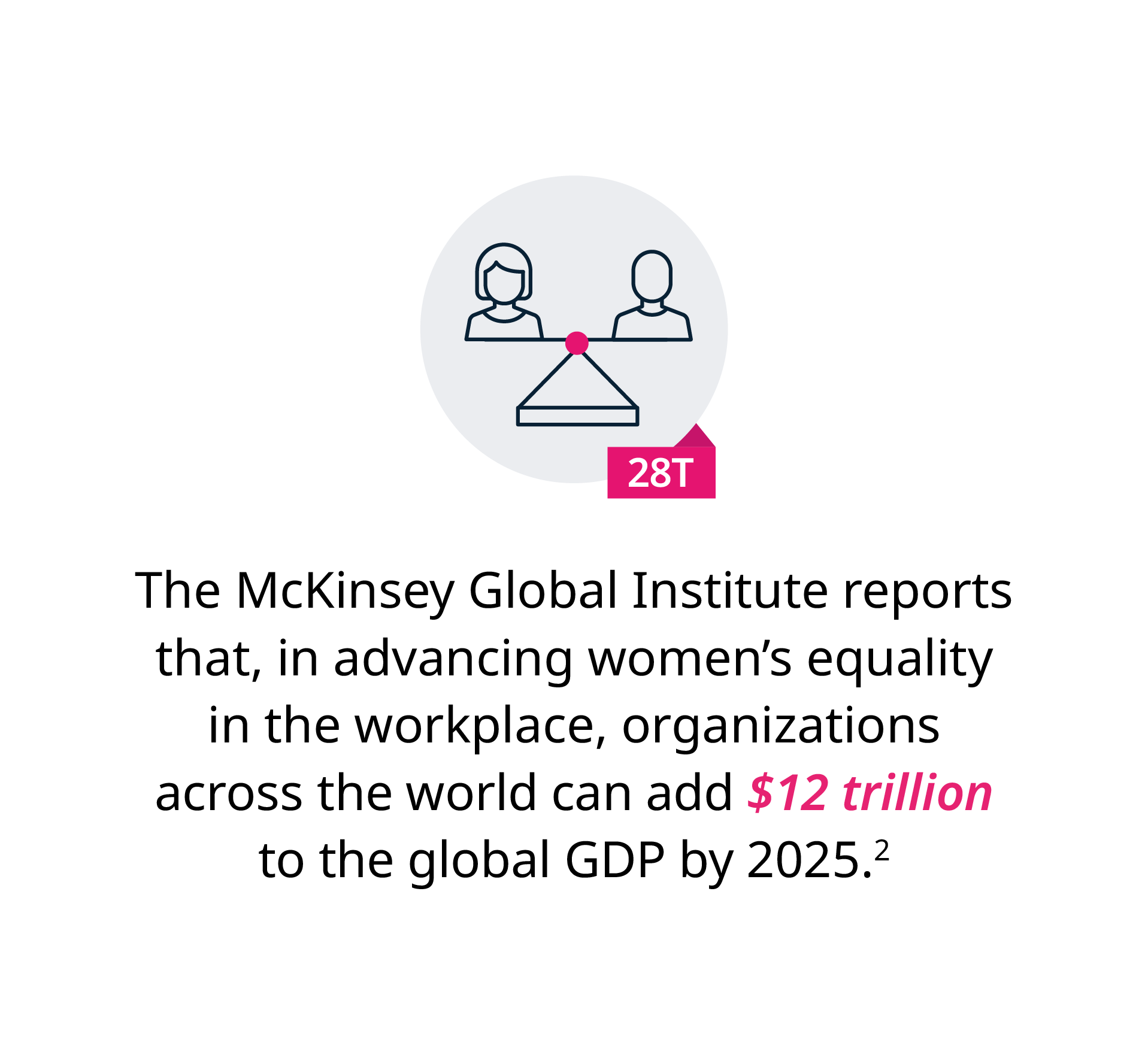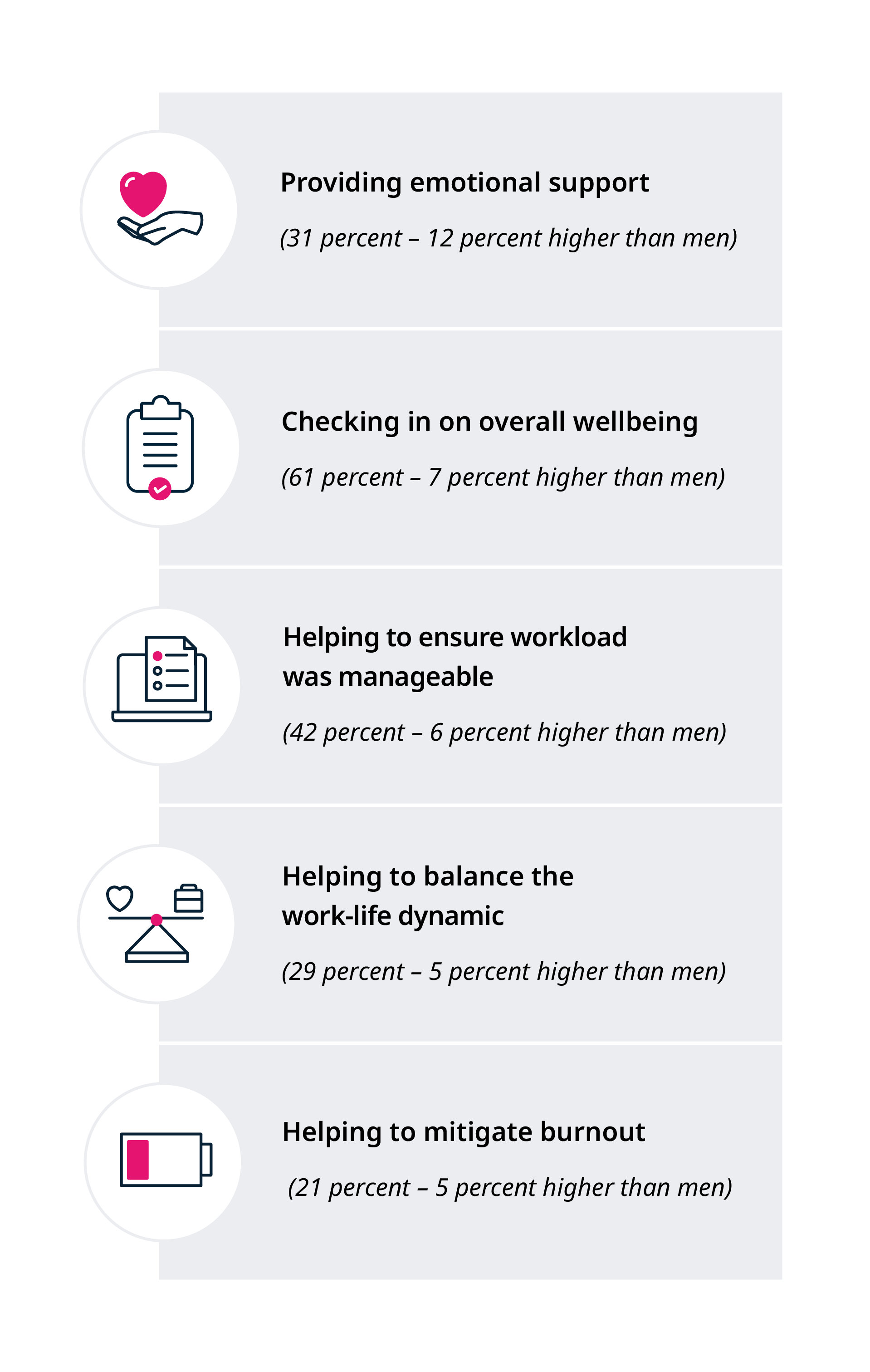4 Business Advantages of Female Leadership
The call for gender equality and the need to close the gender wage gap has been on the global agenda for decades. In many countries, great strides have been made to empower women to take on more leadership positions and activate their potential.
But it isn’t only women business leaders who benefit from increased equality. Greater gender equality contributes to broader economic benefit, enhanced productivity, and improved development outcomes.1

What are the advantages of female leadership?
Female leadership has many benefits. Let’s take a closer look at four of these:
1. More diverse problem-solving
The way you approach a problem is often defined by your worldview, specifically your values and behavioral patterns regarding conflict.
A workforce represented by employees with similar worldviews is comfortable because it’s familiar and less inclined to be confrontational. The problem comes when issues arise. If a process consistently fails or breaks and is met with a team that thinks fairly similarly, the possibilities of innovation and improvement decrease.
Increased representation opens the door to diverse problem-solving because it fosters the interaction of different worldviews and approaches. As a result, considerations that might have been overlooked or thought inconsequential to one group might carry significance for another.
It’s clear that the more varied a workforce, the greater the opportunity for new approaches to optimizing processes.
2. Increased organizational collaboration
A study published in Psychological Science looked at whether men and women’s cooperation behaviors were diametric. Researchers ran participants through a trial of ‘social dilemma games’ intended to assess cooperation levels. Women were found to be more likely to offer partial support or to ‘conditionally cooperate’ in the social dilemma experiments they analyzed.3
Following two years of stress and exhaustion brought on by the effects of the global pandemic, women are emerging as strong leaders, prepared to do more to support their teams and advance diversity, equity, and inclusion efforts than their male counterparts.4
Women are emerging as strong leaders, prepared to do more to support their teams and advance diversity, equity, and inclusion efforts.
U.S. politics reflects the idea of female collaboration. Since 1971, female representatives have more than quadrupled in state legislative office.5 In both the 2018 and 2020 election cycles, record numbers of women ran for political office: 476 in 2018 and 583 in 2020.6
Across the U.S. and worldwide, women widen the debate space, encouraging varied policy priorities to the political agenda. Women have also been shown to be keener to collaborate and build coalitions with their colleagues to increase support for their initiatives and combat institutional barriers.
These developments prove that women are more inclined to collaborate with peers and opposing stakeholders to reach an agreement. The question then becomes: what can the contemporary business environment learn from politics? One conclusion is that the inclusion of more women in negotiations and discussions leads to increased collaboration and swifter decision-making.
3. Higher employee engagement
The success of a team and employee engagement is difficult to measure or diagnose but can be quantified through the effectiveness of the team’s communication. Organizational communication is fundamental to any business, and its absence would result in ineffective processes and incomplete tasks. Open communication creates a more cohesive team and can boost employee morale and build trust.7
Today, employees with female managers state that their managers supported and helped them through 2021 by: 8

It’s clear that having an increased number of women in leadership lends itself to a workforce likely to be more trusting of its leaders. Sam Paddock, former CEO of GetSmarter, believes having females represented in the C-Suite and leadership roles throughout his company has made a significant impact on the way the company is run and how decisions are made.
“When women joined our executive committee, there was a definite shift in our approach from previously being more competitive to now being more collaborative. This approach not only impacted our company culture but also the way we serve our customers and universities. I believe this speaks to the immense value created for a company when women are given the opportunity to lead and contribute to significant business decisions.”
Read more about what Paddock says here.
The sentiment of trust and open communication is mirrored by the belief that women generally make better mentors than men, and not just in women mentoring women. Women who mentor men are more likely to help establish a gender-neutral workspace. 9
Women who mentor men are more likely to help establish a gender-neutral workspace. 9
4. Improved financial performance
For-profit businesses make no effort to hide their number-one priority. The success of a business is ultimately defined by its profitability, and this is predicated on greater gender parity. In fact, the most gender-diverse organizations increase their profitability by 21 percent.10
Moreover, a McKinsey & Company study found that increased representation is synonymous with outperformance. Companies with 30 percent more women executives are more likely to outperform companies by between 10 and 30 percent. In turn, these companies are more likely to outperform those with even fewer women executives or none at all. A substantial differential likelihood of outperformance of 48 percent separates the most from the least gender-diverse companies.11
The reason for increased financial performance isn’t 100% certain, but the correlation between the monetary performance of a business and its female leadership is evident.
More needs to be done to benefit women in business
As a woman in leadership, former Prime Minister of New Zealand, Helen Clark, calls for gender equality and notes that women are, unfortunately, still underrepresented in leadership worldwide. This situation, she says, calls for something more than just having the same human rights.
- 1 (Oct, 2021). ‘The World Bank In Gender’. Retrieved from The World Bank.
- 2 (Sep, 2015). ‘How advancing women’s equality can add $12 trillion to global growth’. Retrieved from McKinsey.
- 3 Schnitzer, K. (Jan, 2021). ‘Men or women? This study found out who is better at collaboration’. Retrieved from The Ladders.
- 4 Burns, T., et al. (Sep, 2021). ‘Women in the Workplace 2021’. Retrieved from McKinsey.
- 5 McVeigh, H. (Nov, 2020). ‘Do Women Lawmakers Need White Men to Cosponsor Their Bills?’. Retrieved from Gender Policy Report.
- 6 Dittmar, K. (Aug, 2020). ‘What you need to know about the record numbers of women candidates in 2020’. Retrieved from Rutgers’ Center for American Women and Politics.
- 7 Jones, M. (Oct, 2021). ‘Effective communication is key to your business’ success’. Retrieved from Breathe HR.
- 8 Burns, T., et al. (Sep, 2021). ‘Women in the Workplace 2021’. Retrieved from McKinsey.
- 9 (Nd). ‘When women mentor men’. Retrieved from Women’s Foodservice Forum. Accessed January 19, 2022.
- 10 (Nd). ‘7 benefits of gender diversity in the workplace’. Retrieved from Workplace. Accessed January 19, 2022.
- 11 Dixon-Fyle, S., et al. (May, 2020). ‘Diversity wins: How inclusion matters’. Retrieved from McKinsey.